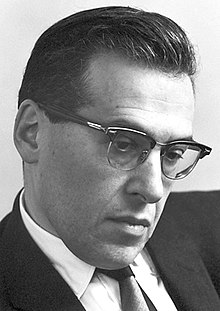Julian Seymour Schwinger (/ˈʃwɪŋər/; February 12, 1918 – July 16, 1994) was a Nobel Prize winning American theoretical physicist. He is best known for his work on the theory of quantum electrodynamics (QED), in particular for developing a relativistically invariant perturbation theory, and for renormalizing QED to one loop order. Schwinger was a physics professor at several universities.

Schwinger is recognized as one of the greatest physicists of the twentieth century, responsible for much of modern quantum field theory, including a variational approach, and the equations of motion for quantum fields. He developed the first electroweakmodel, and the first example of confinement in 1+1 dimensions. He is responsible for the theory of multiple neutrinos, Schwinger terms, and the theory of the spin 3/2 field.
